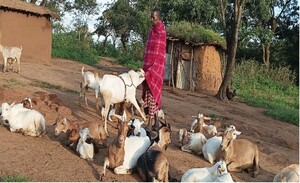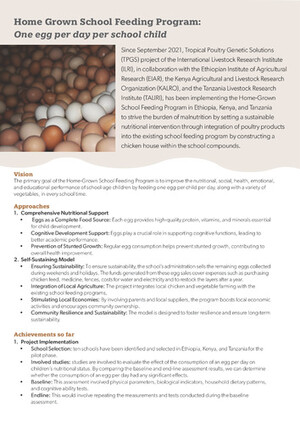
Towards a better understanding of breeding objectives and production performance of dairy cattle in sub-Saharan Africa: A systematic review and meta-analysis
Abstract
The aim of this study was to examine breeding objectives and the impact of production systems and breed types on dairy cattle performance in sub-Saharan Africa (SSA). A total of 64 research studies published between 1980 and 2018 were used for qualitative analysis (qualitative synthesis) of farmers', scientists' and institutional dairy trait preferences. Meta-analysis was conducted to examine the production and reproduction performance of dairy cattle in smallholder and large-scale dairy production systems. Most data used were from smallholder farmers (60%), with the remainder from large-scale farms. Linear mixed-effect models were used to estimate marginal means of production and reproduction traits for different breed types in both production systems. Overall, the results showed that there was a higher emphasis on breeding for improved fertility, increased milk yield and disease resistance. Milk content (fat and protein percentages), temperament, body conformation and total milk cell count (a mastitis indicator) were rarely mentioned in published literature, mainly because of milk pricing policies being volume based. Frequency and multivariate analyses (cluster data analysis) for desirable animal traits suggested that multiple breeding objectives are needed, based on the perceived goals of different farmers and institutions towards genetic improvement for production, reproduction, disease resistance and functional and animal welfare traits. Regardless of the breed type, commercial large-scale farms had a higher milk yield (2857.0 ± 233.3) compared with smallholder dairy farms (2419.8 ± 617.39). Estimated marginal means for lactation milk yield of the three breed types Holstein-Friesian, non-Holstein-Friesian dairy breeds (Jersey, Guernsey, Red Dane, Brown Swiss and Ayrshire) and cross-breds (Bos taurus x Bos indicus) were 3148.5 ± 433.00, 2995.6 ± 456.36 and 1771.1 ± 328.52, respectively. Significantly shorter age at first calving and shorter calving intervals were observed in large-scale farms in comparison to smallholder farms (p < 0.05). No significant differences were noted for age at first calving, calving interval, days open and number of services per conception between the breed types. In conclusion, the present study suggests that (i) improvement of dairy cattle has focused on reproduction, production and disease resistance traits, reflecting the breeding objectives of farmers, scientists and institutions involved in dairy production; (ii) genetics plays a large role in increased dairy productivity in SSA and (iii) future dairy research should emphasise on the interactions between improved feeding, disease control and genetics at a production level to inform profitable combinations of dairy traits.
Citation
Chawala, A.R., Okeyo Mwai, A., Peters, A., Banos, G. and Chagunda, G.G. 2020. Towards a better understanding of breeding objectives and production performance of dairy cattle in sub-Saharan Africa: A systematic review and meta-analysis. Perspectives in Agriculture, Veterinary Science, Nutrition and Natural Resources (CAB Reviews15(007):1-15).










